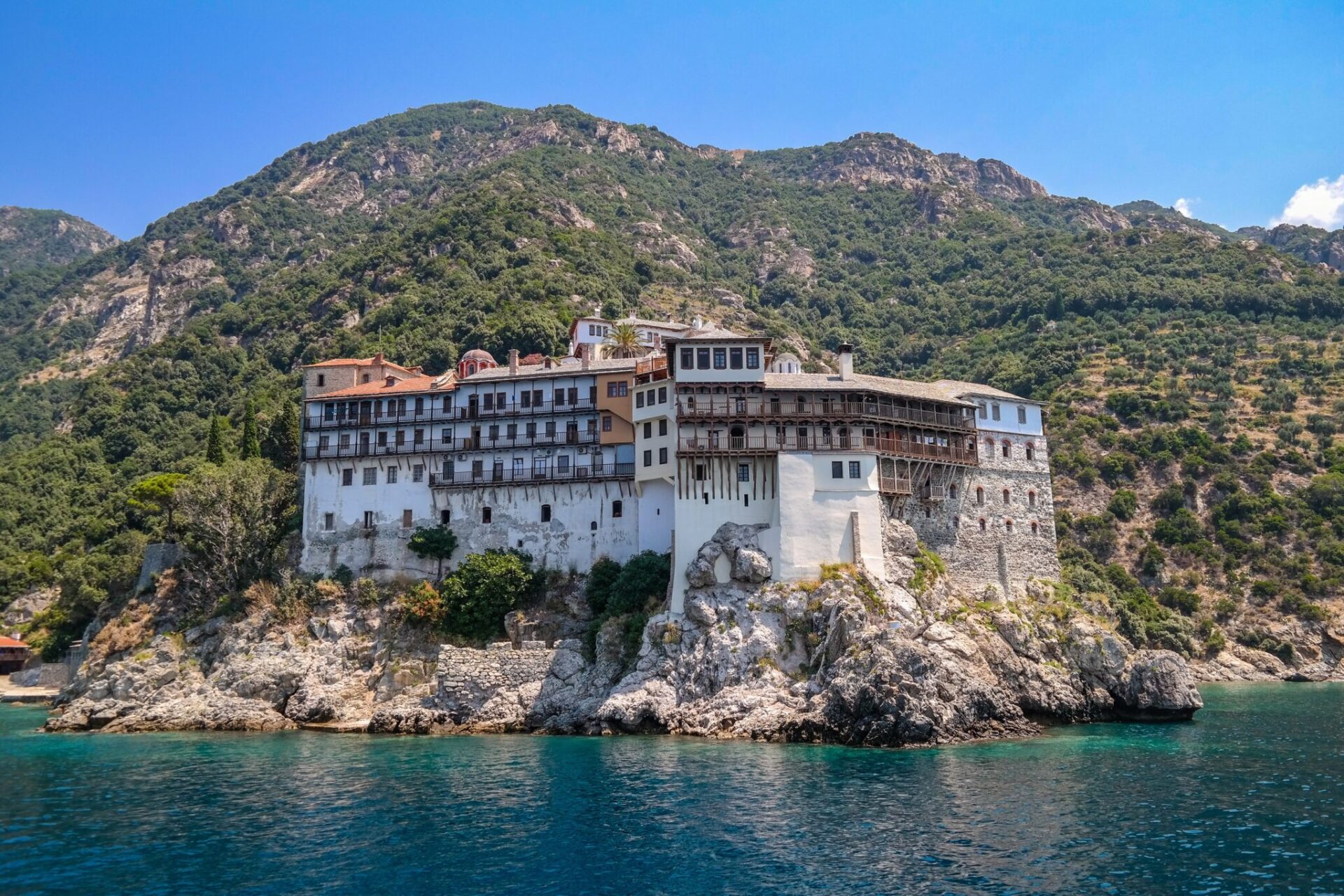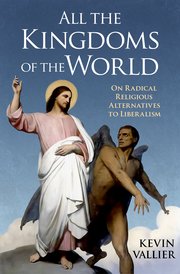When I first undertook this review this book, I didn’t know that it would actually advocate a form of localism. I thought I’d have to work harder to mine the work for parts of interest to FPR readers. Vallier made my task easier with his bottom-line recommendations. But before he gets to those, he tackles a contemporary movement within the Catholic Church, integralism, which wants to convert the world and run states on a confessional basis, with religious coercion of non-Christians.
Kevin Vallier is an Eastern Orthodox scholar with an interest in the integralist movement, which is popular among an active and vocal group of Catholic intellectuals. Vallier also has a chapter on Confucian and Islamic antiliberalisms, but I’ll leave that chapter to other reviewers—most of the book is about integralism, and it’s possible that the extra chapter was added for completeness on the insistence of the editors.
Integralism is narrower than the broader “postliberal” movement among many Catholics, but it’s influential in that movement. The leading lights, who aren’t necessarily working fully in sync, are priests like Father Edmund Waldstein, Gladden Pappin, Thomas Pink, the editors at The Josias, and most famously, Adrian Vermeule. These are all scholarly intellectual folks. In Vermeule’s case, he’s a Harvard Law professor who seems to be trying to shape opinion among the elites. I’ve reviewed his Common Good Constitutionalism (which is not integralist as such. Vallier thinks Common Good Constitutionalism is part of the integralist project, though in his book, Vermeule doesn’t actually go that far, offering a vision which could be followed by non-Catholic interpreters of the Constitution. It is possible that Vermeule’s ultimate goal is to use common good constitutionalism to get to integralism, but he’d have to add elements to the philosophy in his book to get there). Vermeule wants to transform the United States into a Catholic confessional state through the efforts of what Vallier calls a “small, devoted cadre” of elite administrators (p. 130), such as the students in his Harvard law classes if they go on to jobs in the federal bureaucracy. This differs from the usual integralist preference of getting a dominant Catholic majority in a country as a prerequisite of adopting integralist policies through democratic means.
Although the reader can tell merely from the cover of All the Kingdoms of the World: On Radical Religious Alternatives to Liberalism—the devil tempting Jesus in the wilderness by offering the titular kingdoms of the world if Jesus would only worship Satan—that he is opposed to integralism, Vallier is respected by at least some integralists for trying to represent their doctrines accurately—before doing a severe takedown of these doctrines. Perhaps these integralists are so happy to be described without ignorant stereotyping that they’re willing to put up with Vallier’s top-to-bottom denunciation of their ideas.
Basically, integralism is a modified version of the Catholic confessional state that was taught and often practiced by Church leaders until Vatical II muddied the waters, leading in practice to an abandonment of the ideal. Vatican II, according to the integralists, has been misapplied, especially its religious-freedom document, Dignitatis Humanae. Under integralism, the Church and the Catholic state are closely linked—no first-Amendment, American-style separation—with the Church calling on state aid to enforce discipline against baptized Christians. “The church calls on its ‘secular arm’ [the state] chiefly when the canonical justice system fails to deter a convicted criminal” (p. 46). Integralists seem to disavow many historical examples of the Catholic confessional state, where enforcement of discipline against Christians was coupled with discriminatory restrictions on the unbaptized (Jews, for instance). Integralists emphasize strains of Catholic teaching which were not, historically, universally observed—teachings which emphasize the voluntary nature of baptism and refusing to exercise Church jurisdiction over the unbaptized—to argue that such jurisdiction in an integralist state would be applied only to the baptized. It seems that many integralists take this so far that there would be, theoretically, no direct or indirect pressure to convert, so that the unbaptized would get treated more leniently by the secular arm because the state wouldn’t enforce the church’s judgments against them. “Indeed, some integralist regimes may be more tolerant than some liberal regimes” thanks to this limitation and the greater stringency of the liberal state against everyone than the integralist state enforces against Christians (p. 48).
In the history of the Church, at least before the revolution of Vatican II, the different theories of governing the world could be classified as hierocracy (rule of the state by clergy), Gallicanism (rule of the church by kings), and integralism, which is kind of a compromise, articulated by prominent theologians, between these two methods. The integralist state divides rulership between state and secular authorities, with the state intervening to repress heresy and enforce Church discipline, but only when called on to do so by the Church herself. Unlike Gallicanism, the state does not decide what’s heretical or step in when not called to do so. Unlike hierocracy, integralism leaves the secular arm in control of the secular government (with the historical exceptions of the old Papal domains in central Italy (now reduced to Vatican City) and some bishop-ruled statelets elsewhere, where the secular arm was wielded by clergy).
As Vallier explains, “opposition to integralism helped create the liberal tradition” (p. 70). Popes Pius IX and Leo XIII are famous for defending the idea of integralism against liberal attempts to separate Church and State. These struggles played out in Europe, while the Popes and the U.S. hierarchy accepted the non-integralist status quo; even the integralists accepted the American arrangement because America wasn’t a Catholic country, while entertaining the hypothetical possibility that America might become one. The integralists had similar attitudes toward other non-Catholic countries: before the state could be the handmaid of the Church, the country in question would have to be Catholicized, and until then Catholics could advocate religious freedom and church/state separation, though freedom for the Church in a non-Catholic country was a distinct second-best next to a Catholic polity.
This attitude is generally assumed to have been abandoned with Vatican II and its religious-freedom declaration. Integralist Thomas Pink, however, reads Dignitatis Humanae to be consistent with integralism. States cannot repress religious conscience, but then, states never could even before Vatican II; that was the job of the Church—with the state called in to assist if the Church wanted, and not otherwise. Vallier assumes that Pink’s interpretation is correct, otherwise integralism loses right out of the gate. Some such interpretation as Pink’s seems necessary to avoid giving the Church the characteristics of a Marxist-Leninist party, which can change its line at will, one day proclaiming peace with Eastasia and the next day professing that we’ve always been at war with Eastasia. Since the matter of religious freedom and the duty of secular authorities to enforce at least some Church decisions against the baptized has been proclaimed and taught by the Church for centuries—through its Councils and teachings from its authorized theologians—the liberal interpretation of Dignitatis Humanae seems precluded. But Vallier is able to argue that integralism is wrong even if Pink’s interpretation is accepted.
Accepting Pink’s premises for the sake of argument, Vallier gives practical arguments against trying to implement integralism. Ironically, he suggests, the integralist state’s refusal to use religious coercion on the unbaptized will create incentives for Christians to avoid baptism or conceal their baptism in order to avoid the jurisdiction of the Church. By doing so, Christians, like non-Christians, will be subject only to the state’s secular laws and won’t have to worry about complying with Church laws, too. As Vallier asks, “[I]f religious coercion is wrong at the start of the Christian life [pre-baptism], why is it permitted after that?” (p. 199). And what of infants who can’t consent to baptism, making it quite problematic to enforce their parents’ baptismal vows by force on those baptized as infants?
Black Protestants with their history of organized resistance to oppression, plus Jews and gays (presumably joined by nonblack Protestants and by Eastern Orthodox like Vallier) would avoid, and ultimately resist, the authority of a Catholic integralist state, joined by non-integralist Catholics—that is, the majority of Catholics. Vallier thinks the integralist state would respond by adopting authoritarian policies. To suppress dissent, integralist governments will form “elite military forces” and resort to “execution, torture and show trials” (p. 146). Integralist rulers would adopt the tactics of China’s dictatorial regime to enforce integralism (p. 148). This sort of “mass surveillance” would promote “insincere piety” (157).
Economically, integralist states would be at a disadvantage vis-à-vis non-integralist states as the non-integralist states promote worldly welfare and integralist states try to take on secular government and spiritual government simultaneously, with the attendant business-discouraging turbulence. Vallier may be thinking of Catholic states which harmed their economies for the sake enforcing religious conformity—like Louis XIV expelling the economically-productive Huguenots in 1685.
Because of all these tendencies, Vallier says the chance of integralists succeeding can’t be over 0.01 percent: “The integralist ideal is more trouble than it is worth” (p. 161, 163).
But Vallier has an alternate plan that he hopes would be accepted by theocratically inclined Catholics in preference to integralism. Giving up the attempt to put the majority of a state’s inhabitants under integralist rule, Catholics should look to set up tiny theocratic states that, if well-run, would promote religious diversity without using authoritarian methods to impose uniformity on the generality of the people. From his own Eastern Orthodox tradition, Vallier cites the Mount Athos monastic republic in Greece, which the Greek government allows to be run on a theocratic basis, while the rest of Greece stays secular. Nobody is forcibly annexed to Athos, a self-governing community of monks whose influence is limited to moral suasion of the pilgrims who come there in search of wisdom.
Perhaps, Vallier suggests, small integralist statelets, or at least autonomous enclaves, could be set up within, say, Honduras and other places. This would let theocratic Catholics “pursue their ideal without suppressing the ideals of others” (p. 267). These “micro-polities can improve liberal order by repairing liberalism’s estrangement from religion.” This would be a corrective to many liberals’ “mild-to-moderate hostility toward religion” (p. 273).
Vallier endorses a religion-friendly version of liberalism, tolerant of those religious people who oppose, say, gender ideology without giving up liberal commitments to these causes. Vallier’s localist idea of tiny confessional states would allow “freedom of speech, religious liberty, and open-mindedness” in liberal states. At the same time, “[i]f liberal orders allow varied micro-polities, faith communities could organize and protect themselves” against the anti-religious strains of liberalism without forcing religion on the vast majority of inhabitants of liberal states (p. 274-75).
Despite Vallier’s fairness in describing the integralist vision, his practical arguments knock that vision right out of the water. It’s hard to see such an integralist system doing any good, even in the highly unlikely event it were adopted. Yet I don’t think he’ll achieve his goal of persuading those Catholics who are inclined to integralism away from that philosophy. If the alternative to integralism is liberal states with tiny enclaves of confessional states, then integralists’ anti-liberal impulses, and their desire to convert the entire world, would not let them accept Vallier’s offer.
Vallier’s ideas may have more appeal to non-integralists of a localist inclination. Self-government by local communities, including some tiny confessional states, would be more consistent with ideals of diverse, self-governing communities. Therefore, Vallier’s book may find a more receptive audience among FRP reader than among the integralists Vallier is explicitly trying to convert.






1 comment
Aaron
Max:
Your article reminds me of another article I’ve long been hoping to read: A piece by Deneen explaining how integralism is or is not compatible with localism.
I still find the whole integralism thing astounding, particularly as far as the constituency for it. The question “is the pope Catholic?” is far less rhetorical than it used to be, and for the life of me, I can’t fathom how this is any more than a kind of dorm-room thought experiment.
Integralism-writ-small looks a lot like Dreher’s “Benedict Option”, though, and so, seems both far more desirable and far more achievable. To my mind, anyway.
Comments are closed.